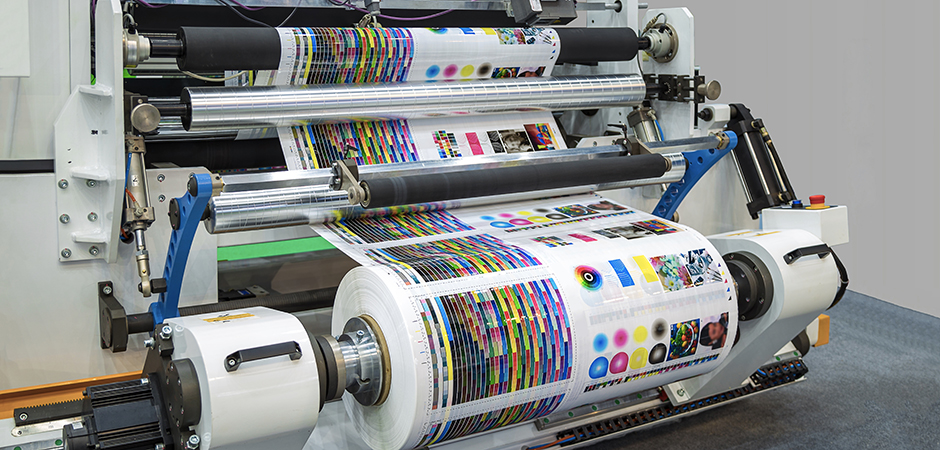In the world of printing, embossing and debossing in offset are techniques that add a tactile dimension to printed materials. These methods are not just about aesthetics; they also enhance the overall feel and perceived quality of the product. Understanding these techniques can be incredibly beneficial for marketing professionals who wish to create impactful print materials.
At the heart of these techniques lies offset printing, a method renowned for its high-quality output. The process of embossing and debossing when combined with offset printing, offers a unique way to make printed materials stand out.

What is Embossing?
Embossing involves raising a design on the paper surface, creating a three-dimensional effect. This is achieved by pressing the paper between two dies a male die and a female die. When pressure is applied, the image on the die is transferred onto the paper, creating a raised impression.
Applications of Embossing
Embossing is often used for logos, monograms, or any design elements that one wants to highlight. It is commonly seen on business cards, invitations, and packaging materials. The tactile feel of embossed elements can greatly enhance the perceived value of the printed item.
What is Debossing?
Debossing is the opposite of embossing. Instead of raising the design, debossing pushes the design into the paper. This creates an indented effect on the paper surface, offering a subtle yet sophisticated look.
Applications of Debossing
Debossing is often used in similar applications as embossing. It works well for creating textural contrast and can be particularly effective when used in combination with other printing techniques such as foil stamping.
Offset Printing and Its Role
Offset printing is a widely used printing technique where the inked image is transferred from a plate to a rubber blanket, then to the printing surface. It is known for its ability to produce consistent high-quality prints and its efficiency in large-volume jobs.
The Advantage of Offset Printing
One of the key advantages of offset printing is its ability to produce sharp and clean images on a variety of substrates. This makes it an ideal choice for both embossing and debossing applications, where precise detail is crucial.
Combining Embossing and Debossing with Offset Printing
When embossing and debossing are combined with offset printing, the results can be stunning. The combination allows for detailed and textured designs that are both visually and tactilely appealing.
Creating Impactful Designs
Using both techniques in conjunction with offset printing can lead to highly impactful designs. For example, a business card with a debossed logo and embossed text can create a memorable impression on recipients.
Challenges and Considerations
While these techniques offer many benefits, they also come with challenges. The setup process can be more complex than other printing methods, and the materials used must be carefully selected to achieve the desired effect.
Material Selection
Not all materials are suitable for embossing and debossing. The thickness and texture of the paper play a significant role in the final outcome. It’s crucial to choose a paper that can withstand the pressure applied during the embossing or debossing process.
Cost Implications
The cost of embossing and debossing in offset printing can be higher than other methods due to the additional setup and materials required. However, the enhanced quality and unique tactile experience can justify the investment, especially for marketing materials where first impressions count.
Balancing Cost and Quality
It’s important to weigh the cost against the perceived value it adds to the final product. For premium products or brands that emphasize quality, the investment in these techniques can be worthwhile.
Environmental Considerations
As with any printing process, its important to consider the environmental impact. Choosing eco-friendly materials and processes can reduce the environmental footprint.
Sustainable Practices
Many printers now offer recycled paper options and soy-based inks, which are less harmful to the environment. These choices can make a significant difference in reducing the overall impact of the printing process
Future Trends in Embossing and Debossing
The future of embossing and debossing in offset printing is promising, with advancements in technology offering new possibilities. Digital enhancements and more sustainable practices are likely to shape the evolution of these techniques.
Technological Advancements
New technologies are making it easier to achieve intricate designs with more precision. This opens up opportunities for even more creative applications in the future.
Conclusion
Embossing and debossing in offset are powerful techniques that add depth and character to printed materials. While they require careful consideration and planning, the results can greatly enhance the impact of print projects, making them a valuable tool for marketers looking to create memorable and high-quality materials.

FAQs
What is the difference between embossing and debossing?
Embossing raises the design on the paper, while debossing creates an indented effect. Both techniques add a tactile dimension to printed materials.
Can embossing and debossing be combined with other printing techniques?
Yes, they are often combined with other techniques such as foil stamping and offset printing to create unique and impactful designs.
Is offset printing suitable for all types of paper?
While offset printing works on a wide range of substrates, the choice of paper can affect the quality of embossing and debossing. Thicker papers often yield better results.
For more information, you can visit Digital Printing vs Offset Printing and Offset Printing vs Laser Printing.
This article contains affiliate links. We may earn a commission at no extra cost to you.






